
Can You Propagate Succulents by Growing New Plants from Leaves?

Succulents have gained tremendous popularity in recent years due to their unique appearance and low maintenance requirements. These plants, characterized by their thick and fleshy leaves, have captured the attention of both seasoned gardeners and novices looking to add some greenery to their homes. One of the fascinating aspects of succulents is their ability to propagate and grow new plants from leaves, making them a favorite among plant enthusiasts.
We will explore the process of propagating succulents from leaves. We will discuss the different methods you can use to successfully grow new plants, including leaf propagation, stem cutting, and division. You will learn about the ideal conditions and techniques for each method, as well as the tips and tricks to increase your success rate. Additionally, we will provide you with a step-by-step guide on how to propagate succulents, ensuring that you have all the information you need to expand your succulent collection and enjoy the beauty of these resilient plants.
- Yes, you can propagate succulents by growing new plants from leaves
- First, select healthy leaves from the parent plant
- Gently remove the leaves, ensuring that the whole leaf is intact
- Step 1: Gently remove the leaves, ensuring that the whole leaf is intact
- Step 2: Allow the leaves to callous over
- Step 3: Prepare a suitable potting mix
- Step 4: Plant the leaves in the prepared potting mix
- Step 5: Provide the right conditions for growth
- Step 6: Be patient and watch for signs of growth
- Allow the leaves to dry for a few days until calluses form over the cut ends
- Prepare a well-draining potting mix for the new plants
- Place the callused end of the leaf into the potting mix
- Mist the potting mix lightly with water to keep it moist
- Keep the potting mix slightly damp, but not soaked
- After a few weeks, tiny roots will start to grow from the callused end of the leaf
- Eventually, a new plantlet will emerge from the base of the leaf
- Once the plantlet has grown a few roots and leaves, it can be gently transplanted into its own pot
- Continue to care for the new plant by providing adequate sunlight, water, and proper drainage
- Continue to care for the new plant
- Frequently Asked Questions
Yes, you can propagate succulents by growing new plants from leaves
Propagating succulents by growing new plants from leaves is not only possible, but it is also a popular and rewarding method for expanding your succulent collection. Whether you are a beginner or an experienced gardener, this technique allows you to create new plants from existing ones, giving you more opportunities to enjoy these unique and resilient plants.
To successfully propagate succulents from leaves, there are a few key steps to follow:
1. Selecting Healthy Leaves
Start by choosing healthy leaves from your mature succulent plants. Look for leaves that are plump, firm, and without any signs of damage or disease. Gently twist or cut the leaves off the stem, ensuring that you include the entire leaf, including the base.
2. Allowing Leaves to Callus
After you have collected the leaves, it is important to let them callus before planting. This process typically takes a few days to a week. Place the leaves in a dry and well-ventilated area, away from direct sunlight. Allowing them to callus helps prevent rotting and promotes successful rooting.
 Propagating Succulents: A Guide to Using Aerial Roots for Growth
Propagating Succulents: A Guide to Using Aerial Roots for Growth3. Planting the Leaves
Once the leaves have callused, it's time to plant them. Prepare a well-draining potting mix suitable for succulents, or even a dedicated succulent soil mix. Make sure the soil is slightly moist but not overly wet. Gently press the callused end of the leaf into the soil, ensuring that it makes good contact. You can plant multiple leaves in the same container, but make sure to leave some space between them.
4. Providing the Right Conditions
Succulents thrive in bright light, so place your newly planted leaves in a location where they will receive indirect sunlight. Avoid exposing them to harsh, direct sunlight, as this can lead to sunburn. Keep the soil lightly moist, but be careful not to overwater. Succulents are adapted to dry conditions and can easily rot if the soil remains too wet.
5. Patience and Care
Once you have planted the leaves and provided the right conditions, it's time to exercise patience. It can take several weeks or even months for the leaves to develop new roots and eventually grow into new plants. During this time, it is important to monitor the soil moisture levels and adjust watering accordingly. Avoid the temptation to tug or disturb the leaves, as this can disrupt the rooting process.
Note: Not all succulent species can be propagated from leaves. Some succulents, like Echeveria and Sedum, are more likely to produce successful results, while others may be more challenging. It's always a good idea to research the specific succulent species you are working with to determine the best propagation method.
Propagating succulents from leaves is a fascinating and rewarding process. It allows you to witness the growth and development of new plants right before your eyes. So, if you're looking to expand your succulent collection or simply enjoy the satisfaction of growing new plants, give leaf propagation a try!
First, select healthy leaves from the parent plant
When it comes to propagating succulents, one method that many plant enthusiasts swear by is growing new plants from leaves. This technique allows you to expand your succulent collection without having to buy new plants. But how exactly does it work?
 Water Propagation: A Guide for Succulent Plants
Water Propagation: A Guide for Succulent PlantsTo begin, you'll need to select healthy leaves from the parent plant. Look for leaves that are plump, firm, and free from any signs of damage or disease. Gently twist the leaf from the stem, ensuring that you remove it cleanly without tearing or breaking it.
Pro tip: It's best to choose mature leaves rather than young ones, as they have a higher chance of success when it comes to propagation.
Once you have your selected leaves, it's time to prepare them for propagation.
Gently remove any excess soil from the leaves
Before you can begin the propagating process, you'll need to gently remove any excess soil from the leaves. This can be done by lightly brushing or shaking off the soil, being careful not to damage the leaf in the process.
Pro tip: If the leaves are covered in dirt or debris, you can also rinse them under lukewarm water to ensure they are clean.
Allow the leaves to callus
After cleaning the leaves, it's important to allow them to callus before planting them. Callusing is the process of forming a protective layer over the cut end of the leaf, which helps prevent rot and allows for successful rooting.
To promote callusing, place the leaves in a dry and well-ventilated area for a few days. Avoid direct sunlight, as this can cause the leaves to dry out too quickly. Once the ends of the leaves have callused over, they are ready for planting.
 Growing Succulent Seeds at Home: A Step-by-Step Guide
Growing Succulent Seeds at Home: A Step-by-Step GuidePlant the leaves in a well-draining soil mix
When it comes to planting the leaves, it's crucial to use a well-draining soil mix specifically designed for succulents. This type of soil allows excess water to drain away quickly, preventing the roots from becoming waterlogged and susceptible to rot.
Pro tip: You can create your own succulent soil mix by combining equal parts of potting soil, perlite, and coarse sand.
Place the callused end of the leaf into the soil, burying it just deep enough to keep it upright. It's important not to bury the entire leaf, as this can increase the risk of rotting. Keep the soil lightly moist, but avoid overwatering.
Now that you know how to select healthy leaves and prepare them for propagation, you can try your hand at growing new succulent plants from leaves. It may take some time and patience, but the reward of watching your new plants grow is definitely worth it!
Gently remove the leaves, ensuring that the whole leaf is intact
One of the most fascinating aspects of succulents is their ability to propagate and grow new plants from leaves. This method of propagation is not only simple but also a great way to expand your succulent collection without having to purchase new plants. In this article, we will explore the process of propagating succulents from leaves and provide some tips for success.
Step 1: Gently remove the leaves, ensuring that the whole leaf is intact
The first step in propagating succulents from leaves is to carefully remove the leaves from the parent plant. It's important to choose healthy, mature leaves for propagation. Gently twist or wiggle the leaf until it separates from the stem, making sure that the entire leaf is intact. Avoid tearing or damaging the leaf in the process.
Step 2: Allow the leaves to callous over
After removing the leaves, it's crucial to let them callous over before planting them. This callous forms a protective layer that helps prevent rotting and promotes root development. Place the leaves in a dry and well-ventilated area for a few days until the cut ends have hardened and calloused.
 How to Propagate a Rock Succulent by Splitting: Step-by-Step Guide
How to Propagate a Rock Succulent by Splitting: Step-by-Step GuideStep 3: Prepare a suitable potting mix
While the leaves are callousing, you can prepare a suitable potting mix for the propagation. Succulents thrive in well-draining soil, so it's essential to create a mix that allows excess moisture to escape. A typical succulent mix consists of equal parts of potting soil, perlite, and coarse sand. This combination provides the necessary drainage and aeration for successful propagation.
Step 4: Plant the leaves in the prepared potting mix
Once the leaves have calloused over and the potting mix is ready, it's time to plant the leaves. Gently press the cut ends of the leaves into the potting mix, ensuring they make good contact with the soil. Avoid burying the entire leaf, as this can increase the risk of rotting. Instead, let the leaf sit on top of the soil, and the roots will grow from the cut end.
Step 5: Provide the right conditions for growth
After planting the leaves, it's crucial to provide the right conditions for successful propagation. Succulents prefer bright, indirect sunlight, so place the pot in a location that receives adequate light. Avoid exposing the leaves to direct sunlight, as this can cause sunburn. Water the leaves sparingly, allowing the soil to dry out completely between waterings. Overwatering can lead to root rot and hinder the growth of new plants.
Step 6: Be patient and watch for signs of growth
Propagation from leaves is a slow process, and it may take several weeks or even months for new plants to develop. Be patient and resist the temptation to disturb the leaves or overwater them in hopes of speeding up the process. Instead, observe the leaves closely for signs of growth, such as the emergence of tiny roots or baby plants (pups) at the base of the leaf.
By following these steps and providing the right conditions, you can successfully propagate succulents from leaves and enjoy the satisfaction of growing new plants from scratch. Remember, each leaf has the potential to become a new succulent, adding to your collection and bringing endless joy to your gardening experience.
Allow the leaves to dry for a few days until calluses form over the cut ends
When it comes to propagating succulents, one of the most popular methods is growing new plants from leaves. This technique allows you to expand your succulent collection without having to purchase additional plants. But how exactly do you go about propagating succulents from leaves?
The first step in this process is to carefully remove a healthy leaf from the mother plant. Gently twist the leaf until it detaches from the stem, making sure to keep the leaf intact. It's important to choose a mature, healthy leaf for propagation, as damaged or diseased leaves may not successfully grow into new plants.
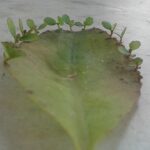 Can I Easily Propagate Succulents by Leaf Propagation?
Can I Easily Propagate Succulents by Leaf Propagation?Once you have removed the leaf, you will need to allow it to dry for a few days until calluses form over the cut ends. This callusing process is crucial, as it helps prevent the leaf from rotting when it is planted. Place the leaves in a warm and dry location, away from direct sunlight, to promote callus formation.
After the calluses have formed, it's time to plant the leaves. Fill a shallow tray or pot with well-draining succulent soil. You can also use a mixture of equal parts perlite and potting soil. Make sure the soil is slightly damp but not overly wet.
Take the callused end of the leaf and gently press it into the soil, ensuring that the entire base of the leaf makes contact with the soil. You can plant multiple leaves in the same container, as long as they have enough space between them to allow for growth.
Once the leaves are planted, it's important to provide them with the right conditions for successful growth. Place the tray or pot in a location with bright, indirect sunlight. Avoid placing them in direct sunlight, as this can cause the leaves to burn. Keep the soil lightly moist but not saturated, as excess moisture can lead to rot.
Over time, you will start to see tiny roots emerge from the base of the leaf, followed by new growth. It's important to be patient during this process, as it can take several weeks to months for new plants to fully form. Once the new plants have reached a decent size, you can carefully separate them from the parent leaf and transplant them into their own pots.
Propagating succulents from leaves is a fascinating and rewarding process. With a little patience and the right care, you can easily grow new succulent plants from leaves, expanding your collection and enjoying the beauty of these unique plants.
Prepare a well-draining potting mix for the new plants
 Water Propagation of Succulents: A Comprehensive Guide
Water Propagation of Succulents: A Comprehensive GuideGrowing new succulent plants from leaves is a popular and exciting method of propagation for succulent enthusiasts. It's a cost-effective and fun way to expand your succulent collection. In this article, we will explore the process of propagating succulents from leaves and provide you with a step-by-step guide to get started.
Step 1: Select healthy leaves
To begin the propagation process, you need to select healthy leaves from your mature succulent plants. Look for leaves that are plump, firm, and free from any signs of damage or disease. Gently twist or cut the leaves off the stem, ensuring that you include the base of the leaf where it connects to the stem. It's essential to have a clean break without any tears or damage to the leaf.
Step 2: Allow the leaves to callus
After removing the leaves, it's crucial to let them dry and callus over before planting them. This process typically takes a few days to a week. Place the leaves on a clean surface in a warm and dry location, away from direct sunlight. Allowing the leaves to callus helps prevent rot and promotes successful rooting.
Step 3: Prepare a well-draining potting mix
A well-draining potting mix is essential for the successful growth of your new succulent plants. You can create your own mix or purchase a pre-made succulent soil mix. A typical mix consists of equal parts of potting soil, perlite, and coarse sand. This combination provides excellent drainage while retaining enough moisture for the succulents.
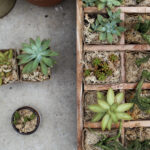 Dormancy in Succulents: A Guide to Varieties and Timing
Dormancy in Succulents: A Guide to Varieties and TimingStep 4: Plant the leaves in the potting mix
Once the leaves have callused, it's time to plant them in the well-draining potting mix. Gently press the base of the leaves into the soil, ensuring that they are firmly in place. It's important to position the leaves upright, with the callused end inserted into the soil, while the other end remains above the surface.
Step 5: Provide the right conditions for propagation
Succulent leaves require specific environmental conditions to propagate successfully. Place the potted leaves in a bright location with indirect sunlight. Avoid exposing them to harsh, direct sunlight, as it can cause sunburn or scorch the leaves. Maintain a warm temperature of around 70-75°F (21-24°C) and provide good airflow to prevent fungal issues.
Step 6: Wait for new growth
Be patient and wait for the magic to happen! Over time, you will start to see small rosettes or baby plants forming at the base of the leaves. These are called "pups" or "offsets" and indicate that your succulent leaf propagation has been successful. It may take several weeks to months for the new plants to fully develop.
By following these steps, you can enjoy the rewarding experience of propagating succulents from leaves. Remember to be patient, as succulent propagation requires time and care. With practice, you'll become a pro at growing new succulent plants and expanding your collection.
 Can Succulent Cuttings Be Planted Directly in Soil?
Can Succulent Cuttings Be Planted Directly in Soil?Place the callused end of the leaf into the potting mix
When it comes to propagating succulents, one popular method is to grow new plants from leaves. This technique allows you to create multiple plants from a single leaf, making it a cost-effective and fun way to expand your succulent collection.
To begin the process, you will need a healthy succulent leaf that has fallen off or has been carefully removed from the plant. Ensure that the leaf is mature and not damaged, as this will increase your chances of success.
Callusing the Leaf
Before planting the leaf, it is important to let it callus. This means allowing the cut end of the leaf to dry and form a protective layer. To do this, place the leaf on a dry surface or a piece of paper towel and let it sit for a few days. This step is crucial for preventing rot and promoting successful propagation.
Preparing the Potting Mix
While the leaf is callusing, prepare a well-draining potting mix suitable for succulents. A good mix consists of equal parts of cactus soil, perlite, and coarse sand. This combination ensures that excess water drains away quickly, preventing root rot.
Planting the Leaf
Once the leaf has callused and the potting mix is ready, gently press the callused end of the leaf into the potting mix. Make sure the leaf is inserted deep enough to provide stability but avoid burying it completely. The callused end should be in contact with the potting mix.
Note: It's important to keep the leaf upright and avoid covering it with the potting mix, as this can hinder root development.
Caring for the Leaf
Place the potted leaf in a bright location with indirect sunlight. Avoid exposing it to direct sunlight, as this can cause the leaf to burn or dry out. Keep the potting mix lightly moist but not soggy. Overwatering can lead to rotting, while underwatering can hinder root development.
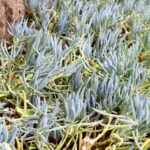 Propagation of Succulents: Cutting Techniques and Methods
Propagation of Succulents: Cutting Techniques and MethodsTip: Using a spray bottle to mist the potting mix can help maintain the right level of moisture without overwatering.
Rooting and Growth
Over time, you will start to see roots forming from the callused end of the leaf. This indicates that the leaf is successfully propagating. Be patient, as it can take several weeks or even months for the roots to develop fully.
Once the roots have established, new rosettes or small plants will emerge from the base of the leaf. At this point, you can choose to leave them attached to the original leaf or gently separate them and plant them individually in their own pots.
Remember to provide these new plants with the same care as mature succulents, including proper lighting, well-draining soil, and regular watering.
By following these steps, you can successfully propagate succulents by growing new plants from leaves. It's a rewarding process that allows you to expand your succulent collection and share the joy of growing these unique and beautiful plants.
Mist the potting mix lightly with water to keep it moist
Propagating succulents by growing new plants from leaves is a popular and rewarding method for expanding your succulent collection. Not only is it a cost-effective way to obtain new plants, but it also allows you to witness the fascinating process of growth and development.
 Succulent Root Growth: Unveiling Patterns and Depths
Succulent Root Growth: Unveiling Patterns and DepthsTo start propagating succulents from leaves, you will need a few essential materials:
- A well-draining potting mix
- Healthy succulent leaves
- A shallow container or tray
- A spray bottle filled with water
- Patience and a sprinkle of enthusiasm!
Preparation:
Before you begin, make sure to select healthy leaves from your existing succulent plants. Look for mature leaves that are plump, firm, and free from any damage or disease. Gently twist or cut the leaves from the stem, ensuring that you include the entire leaf intact.
Once you have your leaves, prepare a well-draining potting mix. Succulents thrive in soil that allows excess water to drain quickly, preventing root rot. You can create a suitable mix by combining equal parts of sandy soil, perlite, and coarse sand. Mist the potting mix lightly with water to keep it moist but not overly saturated.
Propagation Process:
- Place the prepared potting mix in a shallow container or tray, ensuring it is at least 2 inches deep.
- Take your succulent leaves and gently press them into the potting mix, burying about half of the leaf.
- Arrange the leaves in a single layer, leaving some space between each leaf to allow airflow.
- Find a bright location with indirect sunlight for your leaf propagation setup. Avoid placing them in direct sunlight, as it can scorch the leaves.
- Mist the leaves and potting mix with water using a spray bottle, keeping them lightly moist throughout the propagation process.
- Be patient and give your succulent leaves time to develop roots. This process can take several weeks to months, depending on the succulent species.
- Once you notice small rosettes or tiny plants forming at the base of the leaves, it indicates successful root development.
- Gently separate the new plants from the parent leaf and transplant them into individual pots with well-draining soil.
Remember to provide the newly propagated succulents with proper care, including adequate sunlight, occasional watering, and well-draining soil. With time and care, your propagated succulents will grow into beautiful, thriving plants that you can proudly add to your collection.
Keep the potting mix slightly damp, but not soaked
Succulents are known for their ability to thrive in dry conditions, but when it comes to propagating them from leaves, keeping the potting mix slightly damp is crucial. While succulent leaves can survive in arid environments, they need moisture to initiate root growth and develop into new plants.
However, it's important to strike a balance and avoid overwatering. Overly wet soil can lead to rotting of leaves and hinder the propagation process. The key is to provide enough moisture to encourage root growth without drowning the leaves.
To achieve this, you can mist the potting mix or lightly water it when it starts to dry out. Aim for a damp consistency, where the soil feels moist to the touch but not soaked. Remember to use well-draining potting mix specifically formulated for succulents to prevent waterlogging and ensure optimal conditions for successful propagation.
After a few weeks, tiny roots will start to grow from the callused end of the leaf
One of the fascinating aspects of succulent plants is their ability to propagate and reproduce in unique ways. One popular method is to grow new plants from leaves, which can be an exciting and rewarding experience for succulent enthusiasts.
When you carefully remove a leaf from a mature succulent plant, it is essential to let it callus over before attempting to propagate it. This calloused end protects the leaf from rotting and allows it to form roots. After a few weeks, you will notice tiny roots starting to emerge from the callused end of the leaf.
It is crucial to provide the right conditions for the leaf to propagate successfully. Place the callused end of the leaf in well-draining soil, ensuring that it remains slightly moist but not overly wet. Too much moisture can lead to root rot, so be cautious not to overwater.
Additionally, placing the leaf in a warm and bright location will aid in the growth process. Succulents thrive in bright, indirect sunlight, so make sure to provide them with adequate light. However, avoid placing the leaf in direct sunlight, as it can scorch the delicate roots and hinder growth.
As the roots continue to develop, you will observe the formation of small rosettes or baby plants at the base of the leaf. These tiny rosettes are the sign that your propagation attempt has been successful. At this point, you can carefully remove the leaf and allow the new plant to continue growing independently.
It is important to note that not all succulent species can be propagated by leaf cuttings. Some varieties, such as Echeveria, Sedum, and Crassula, are more suitable for this method, while others may require alternative propagation techniques like stem cuttings or division.
While growing new plants from leaves can be a slow process, it is undoubtedly a rewarding one. Watching the tiny roots and baby rosettes emerge from a single leaf is a testament to the resilience and adaptability of succulent plants.
Eventually, a new plantlet will emerge from the base of the leaf
Propagating succulents by growing new plants from leaves is a popular method among succulent enthusiasts. It is a fascinating process that allows you to expand your succulent collection without having to purchase new plants. One of the most exciting moments in this propagation journey is when a new plantlet emerges from the base of the leaf.
When you start the process of leaf propagation, you carefully remove a healthy leaf from the parent succulent plant. It is essential to choose a mature leaf that is plump and free from any damage or disease. Once you have selected the perfect leaf, you gently twist it off the stem, making sure to keep the base intact.
After removing the leaf, it is crucial to let it dry for a few days. This step allows the cut end of the leaf to callous over, which helps prevent rotting when it is placed in the soil. Once the leaf has calloused, it is time to plant it in a suitable growing medium.
You can use a well-draining soil mix specifically designed for succulents or create your own by combining equal parts of sand, perlite, and potting soil. Fill a small container with the soil mix and make a shallow indentation in the center. Gently place the base of the leaf into the soil, ensuring that it makes good contact with the soil surface.
Now comes the waiting game. Over the course of several weeks or months, you will notice tiny roots emerging from the base of the leaf. These roots serve as the anchor for the new plantlet and absorb nutrients from the soil. It is important to water the leaf propagation moderately, making sure not to overwater, as excessive moisture can lead to rot.
As the roots continue to grow, you might also observe small buds forming at the base of the leaf. These buds will eventually develop into new leaves and, in time, a whole new succulent plant. It is an exciting process to witness, as you watch the new plantlet slowly take shape.
During this stage, it is crucial to provide the leaf propagation with optimal growing conditions. Place it in a bright location, but avoid direct sunlight as it can scorch the delicate leaves. Keep the soil slightly moist but not soggy, and be patient. The growth rate of new plantlets can vary depending on the succulent species and environmental factors.
Propagating succulents by growing new plants from leaves is an enjoyable and rewarding way to expand your collection. The emergence of a new plantlet from the base of the leaf is a remarkable event to witness. With proper care and patience, you can successfully propagate succulents and create a stunning array of new plants to admire.
Once the plantlet has grown a few roots and leaves, it can be gently transplanted into its own pot
Propagating succulents by growing new plants from leaves is a popular method among plant enthusiasts. It is an interesting and rewarding process that allows you to expand your succulent collection without having to purchase new plants.
To begin the propagation process, select a healthy succulent leaf from the parent plant. It is important to choose a leaf that is mature and plump, as older leaves tend to have a higher success rate. Gently twist the leaf off the plant, ensuring that a small portion of the stem is attached.
Once you have your leaf, let it dry for a few days until the cut end callouses over. This is crucial for successful propagation, as it helps prevent rotting and promotes the formation of roots. Once the cut end is calloused, you can proceed with the next steps.
Water Propagation
One method of propagating succulents from leaves is through water propagation. Fill a shallow container with clean water and place the base of the leaf in the water, ensuring that only the cut end is submerged. It is important to avoid submerging the entire leaf, as this can lead to rotting.
Place the container in a bright location but away from direct sunlight. Over time, you will begin to see roots emerging from the base of the leaf. Once the plantlet has grown a few roots and leaves, it can be gently transplanted into its own pot filled with well-draining succulent soil.
Soil Propagation
Another method of propagating succulents is through soil propagation. Prepare a well-draining succulent soil mix, which typically consists of a combination of potting soil, perlite, and sand. Fill a small pot or tray with the soil mix.
Place the calloused end of the leaf on top of the soil, ensuring that it makes good contact. You can use a small stake or pebble to hold the leaf in place if necessary. Mist the soil lightly with water, being careful not to overwater.
Position the pot or tray in a bright area with indirect sunlight. Regularly mist the soil to keep it lightly moist, but avoid saturating it. Over time, roots will develop from the base of the leaf and a new plantlet will emerge.
After a few weeks or months, the new plantlet will have developed sufficient roots and leaves to be transplanted into its own individual pot. At this stage, you can treat it like any other mature succulent and provide it with the appropriate care.
Remember, not all succulents can be propagated successfully from leaves. Some species or hybrids may not readily produce offspring through this method. It is always best to research the specific succulent species you are working with to determine the most effective propagation method.
Propagating succulents from leaves can be a fun and rewarding way to grow your collection. It allows you to witness the growth process firsthand and create new plants to share with fellow succulent enthusiasts. So, why not give it a try and see your succulent family expand?
Continue to care for the new plant by providing adequate sunlight, water, and proper drainage
Continue to care for the new plant
by providing adequate sunlight, water, and proper drainage.
Once you have successfully propagated a succulent by growing a new plant from a leaf, it is important to continue providing the necessary care to ensure its healthy growth. This includes providing adequate sunlight, water, and proper drainage.
Sunlight
Succulents thrive in bright, indirect sunlight. Place the new plant in a location where it can receive at least 6 hours of sunlight per day. However, be cautious of exposing it to intense, direct sunlight, especially during peak hours, as this can lead to sunburn and damage the leaves.
Watering
When it comes to watering succulents, it's crucial to strike a balance. Overwatering can cause root rot and ultimately kill the plant, while underwatering can lead to dehydration and stunted growth. Allow the soil to dry out completely between waterings and then water thoroughly, ensuring that excess water drains out of the pot. Succulents generally require less water during the winter months when they enter a period of dormancy.
Proper Drainage
Succulents prefer well-draining soil to prevent the roots from sitting in water for extended periods. Make sure the pot or container has drainage holes to allow excess water to escape. You can also add a layer of gravel or rocks at the bottom of the pot to promote better drainage. Avoid using pots without drainage holes, as this can lead to waterlogged soil and root rot.
Note: It's important to remember that different succulent varieties may have slightly different care requirements. Research the specific needs of the succulent you have propagated to ensure optimal care.
By providing the new succulent plant with adequate sunlight, proper watering, and ensuring it has proper drainage, you can help it thrive and grow into a mature, healthy plant. Keep an eye on the plant's growth and adjust care as needed to promote its overall well-being.
Frequently Asked Questions
1. Can You Propagate Succulents by Growing New Plants from Leaves?
Yes, many succulents can be propagated by growing new plants from leaves. Simply remove a healthy leaf, let it dry for a few days, and then place it on well-draining soil. New roots and a baby plant will eventually grow from the leaf.
2. How Often Should I Water My Succulents?
Succulents generally require infrequent watering. It is best to water them thoroughly when the soil is completely dry, typically every 1-2 weeks depending on the environment and the type of succulent.
3. Do Succulents Require Full Sunlight?
Most succulents prefer bright sunlight, but not all can tolerate full sun. It is important to understand the light requirements of your specific succulent to ensure it receives the appropriate amount of sunlight.
4. How Often Should I Fertilize My Succulents?
Succulents have low fertilizer requirements. It is recommended to fertilize them sparingly, usually once or twice a year during their active growth period with a balanced fertilizer diluted to half strength.
If you want to read more articles similar to Can You Propagate Succulents by Growing New Plants from Leaves?, you can visit the Propagation category.


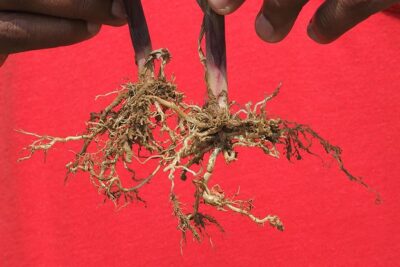


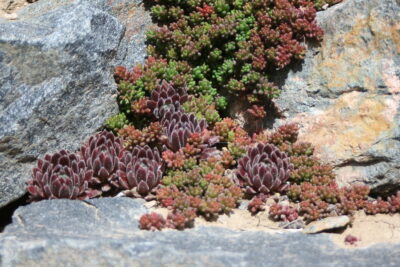
You Must Read